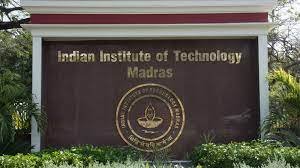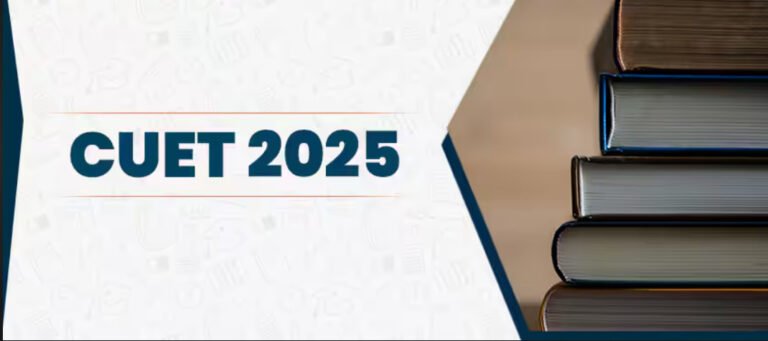NSEC Exam Analysis 2023: Check Detailed Paper Analysis Here

National Standard Examinations – Chemistry (NSEC) is a nationwide examination organized by IAPT (Indian Association of Physics Teachers) in coordination with Association of Chemistry Teachers (ACT). IAPT has been conducting NSEC at CBSE class XII level. The NSEs are the First stage and THE ONLY SCREENING TESTS in India leading towards International Olympiads in the respective science subjects.
NSE contain a maximum of 60 Questions having Maximum Marks of 216, which is bifurcated in two parts in following manner:
In part A1 (Q. No.1 to 48) each question has four alternatives, out of which only one is correct. Each correct answer carries 3 marks whereas 1 mark will be deducted for each wrong answer.
In part A2 (Q. No. 49 to 60) each question has four alternatives out of which any number of alternative(s) (1, 2, 3, or 4) may be correct. You have to choose all the correct alternative(s) and fill the appropriate bubble(s). Students get 6 marks if all the correct alternatives are marked. No negative marks in this part.
NSEC 2023-24 was conducted on Sunday, November 26, 2023 from 11:30 AM to 1:30 PM for eligible students
As per our NSEC and IIT Mentor- Sri Manish Anand- Director – Champ Square Ranchi, our expert, has given analysis of NSEC 2023 in elaborate way., below are the Key Take-Aways from NSEC 2023-24: Analysis of Difficulty Level

Director
Champ Square
It was rated as Moderate on the difficulty level. It consisted mostly of easy & moderate questions.
| Easy | Medium | Difficult | Grand Total | ||||
| No of Questions | Total Marks | No of Questions | Total Marks | No of Questions | Total Marks | No of Questions | Total Marks |
| 25 | 81 | 31 | 120 | 4 | 15 | 60 | 216 |
Question Paper – Link
Answer Key – Link
Chapter/Topic Level Level Distribution
Following is the question distribution table as per Class, Chapter, Topic & Difficulty:
| Question No. | Chapter | Topic Name | Difficulty Level | Marks | Class | Secti on |
| 1 | Equilibrium | Solubility Product | Medium | 3 | XI | A1 |
| 2 | The s-Block Elements | Solubility of Alkaline earth metal hydroxides | Easy | 3 | XI | A1 |
| 3 | Some basic concepts of chemistry | Concentration terms – Molarity | Easy | 3 | XI | A1 |
| 4 | Redox Reactions | Oxidizing & Reducing agents | Medium | 3 | XII | A1 |
| 5 | Organic Chemistry : Some Basic Principles and Techniques | Reaction intermediates | Easy | 3 | XI | A1 |
| 6 | Haloalkanes and Haloarenes | Nucleophilic substitution reactions | Easy | 3 | XII | A1 |
| 7 | Organic Chemistry : Some Basic Principles and Techniques | Nomenclature | Easy | 3 | XI | A1 |
| 8 | Organic Chemistry : Some Basic Principles and Techniques | Isomerism | Easy | 3 | XI | A1 |
| 9 | Hydrocarbons | Addition reactions of dienes | Medium | 3 | XI | A1 |
| 10 | Aldehydes, Ketones and Carboxylic Acids | Nucleophilic addition reactions | Easy | 3 | XII | A1 |
| 11 | Aldehydes, Ketones and Carboxylic Acids | Aldol condensation | Difficult | 3 | XII | A1 |
| 12 | Aldehydes, Ketones and Carboxylic Acids | Aldol condensation | Medium | 3 | XII | A1 |
| 13 | Biomolecules | Amino acids | Medium | 3 | XII | A1 |
| 14 | Alcohols, Phenols and Ethers | Hydroboration & Oxidation | Medium | 3 | XII | A1 |
| 15 | Aldehydes, Ketones and Carboxylic Acids | Wolfkishner reduction | Medium | 3 | XII | A1 |
| 16 | Hydrocarbons | Electrophilic substitution reactions | Medium | 3 | XI | A1 |
| 17 | Hydrocarbons | Properties of alkanes | Easy | 3 | XI | A1 |
| 18 | Aldehydes, Ketones and Carboxylic Acids | Reduction methods of aldehydes & ketones | Medium | 3 | XII | A1 |
| 19 | Hydrocarbons | Activators & Directing effects | Medium | 3 | XI | A1 |
| 20 | Aldehydes, Ketones and Carboxylic Acids | Nucleophilic addition mechanism | Medium | 3 | XII | A1 |
| 21 | Structure of Atom | Black body radiations | Easy | 3 | XI | A1 |
| 22 | Thermodynamics | Work & Heat | Medium | 3 | XI | A1 |
| 23 | Some basic concepts of chemistry | Concentration terms | Easy | 3 | XI | A1 |
| 24 | Electrochemistry | Galvanic cells | Medium | 3 | XII | A1 |
| 25 | Chemical Kinetics | Rate of Reaction | Easy | 3 | XII | A1 |
| 26 | Structure of Atom | Photoelectric effect | Medium | 3 | XI | A1 |
| 27 | Structure of Atom | Electromagnetic radiations | Easy | 3 | XI | A1 |
| 28 | Coordination Compounds | Stability of complexes | Medium | 3 | XII | A1 |
| 29 | Thermodynamics | Different Enthalpies of the reaction | Easy | 3 | XI | A1 |
| 30 | The d and f-Block Elements | IUPAC nomenclature of coordination compounds | Easy | 3 | XII | A1 |
| 31 | The p-Block Elements (XII) | Oxoacids of phosphorus | Easy | 3 | XII | A1 |
| 32 | The p-Block Elements (XII) | Hydrolysis of Xenon compounds | Easy | 3 | XII | A1 |
| 33 | Classification of Elements and Periodicity in Properties | Electronic Configuration | Medium | 3 | XI | A1 |
| 34 | The p-Block Elements (XI) | Compounds of Aluminium | Difficult | 3 | XI | A1 |
| 35 | The p-Block Elements (XII) | Oxygen Family | Easy | 3 | XI | A1 |
| 36 | Hydrogen | Water | Medium | 3 | XI | A1 |
| 37 | Redox Reactions | Electrode potentials | Easy | 3 | XI | A1 |
| 38 | The s-Block Elements | Ionic radii | Easy | 3 | XI | A1 |
| 39 | General Principles and Processes of Isolation of Elements | Calcination & Roasting | Easy | 3 | XII | A1 |
| 40 | Coordination Compounds | Structural isomerism of Coordination compounds | Easy | 3 | XII | A1 |
| 41 | The d and f-Block Elements | Magnetic properties | Medium | 3 | XII | A1 |
| 42 | States of Matter | Compressibility Factor | Easy | 3 | XI | A1 |
| 43 | Thermodynamics | Thermodynamic processes | Difficult | 3 | XI | A1 |
| 44 | Equilibrium | Equilibrium | Medium | 3 | XI | A1 |
| 45 | Solutions | Colligative properties | Medium | 3 | XII | A1 |
| 46 | Chemical Kinetics | Nuclear Chemistry – Radioactivity | Medium | 3 | XII | A1 |
| 47 | Electrochemistry | Latimer diagram | Medium | 3 | XII | A1 |
| 48 | Electrochemistry | Electrolysis | Easy | 3 | XII | A1 |
| 49 | The p-Block Elements (XI) | Silicates | Medium | 6 | XI | A2 |
| 50 | Coordination Compounds | Color of complexes | Difficult | 6 | XII | A2 |
| 51 | Haloalkanes and Haloarenes | Optical Activity | Medium | 6 | XII | A2 |
| 52 | Haloalkanes and Haloarenes | Electrophilic substitution reactions | Medium | 6 | XII | A2 |
| 53 | Alcohols, Phenols and Ethers | Acidity of phenols | Medium | 6 | XII | A2 |
| 54 | Hydrocarbons | Addition properties of dienes | Medium | 6 | XI | A2 |
| 55 | Organic Chemistry : Some Basic Principles and Techniques | Geometrical Isomerism | Medium | 6 | XI | A2 |
| 56 | Chemical Kinetics | Arrhenius equation | Medium | 6 | XII | A2 |
| 57 | Surface Chemistry | Electric properties of colloids | Easy | 6 | XII | A2 |
| 58 | Solutions | Colligative properties – Osmosis | Easy | 6 | XII | A2 |
| 59 | Equilibrium | Buffers & salt Hydrolysis | Medium | 6 | XI | A2 |
| 60 | Structure of Atom | Quantum mechanical model of atom | Medium | 6 | XI | A2 |
Class Wise Distribution Level
- Questions were asked equally from both Class XI & XII syllabus, both hold equal weightage
- Nearly equal distribution of Scores can be seen in between Class XI & XII in this paper
| Section | XI | XII | Grand Total | |||
| No. of Questions | Total Marks | No. of Questions | Total Marks | No. of Questions | Total Marks | |
| A1 | 25 | 75 | 23 | 69 | 48 | 144 |
| A2 | 5 | 30 | 7 | 42 | 12 | 72 |
| Grand Total | 30 | 105 | 30 | 111 | 60 | 216 |
Vikas Kumar – career counsellor and Director- Psychographic Society Ranchi said that 2024 is a year of benefit for all classes as two categories of selection was announced. Earlier there was one category of std 10th to 12th. However- this year one category is for std x and xi, and the second category is for std 12. This is most suitable format for all classed. In 2023 quota for Jharkhand was 6 . While in 2024- quota for std 10th and 11th category is 4 and std 12 category is 4- Making total of 8.

Vikas Kumar
Director
Psychographic Society
Dear Students & Parents of Std 8 to 12- One Stop solution for career counseling – Vikas Kumar @ Psychographic Society -city center -club Road Ranchi
For more information call – 9570795071/9709534303
For Counselling Program Details – Click
Also Read-
- Vikas Kumar
- Best Career Counselling Centre @ Ranchi
- Best career counsellor of Bihar – Jharkhand – YOUTUBE






